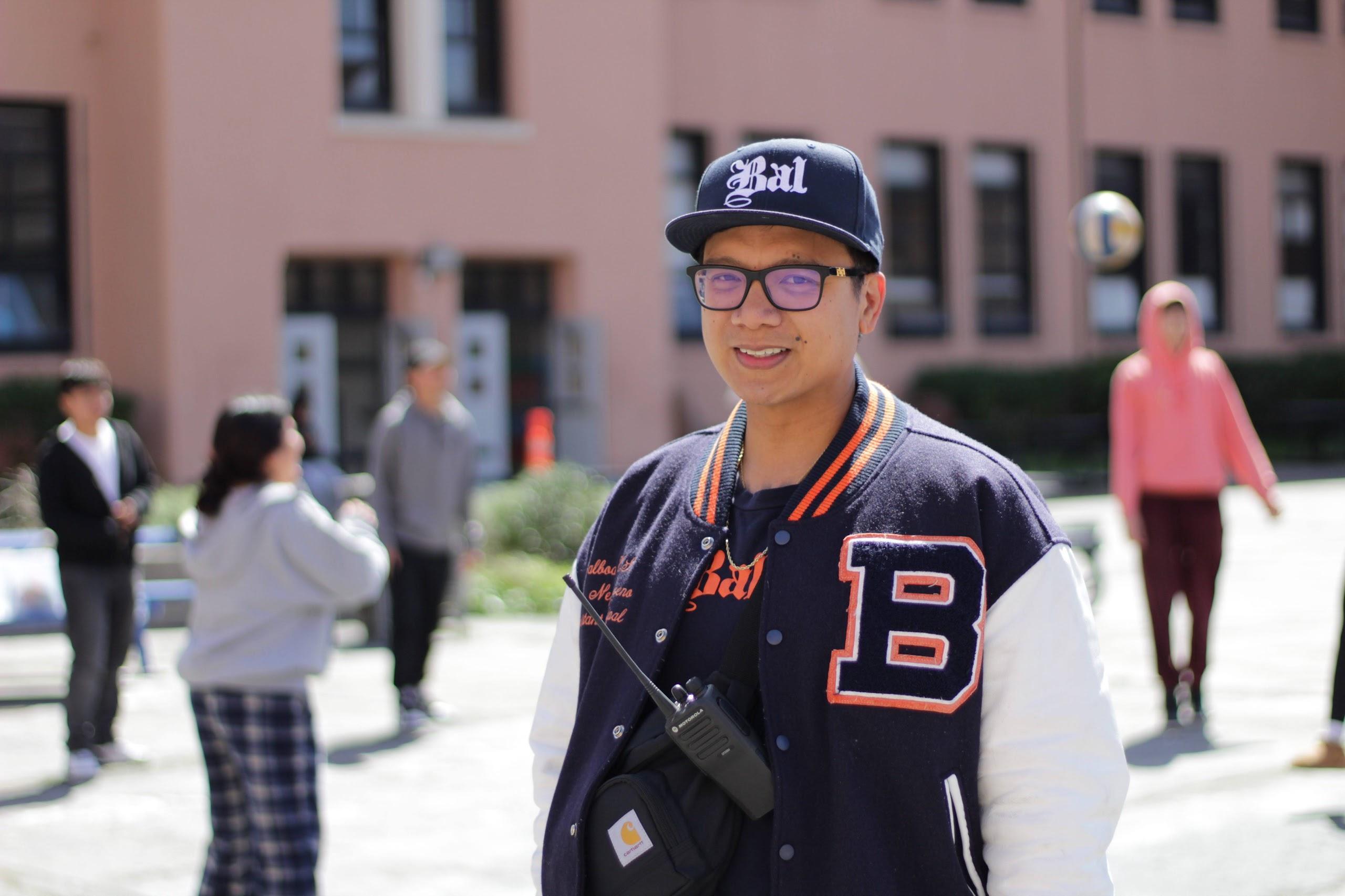Assistant Principal John Nepomuceno of San Francisco’s Balboa High School describes himself as a social justice educator and equity advocate. After more than 20 years as a teacher and school leader, he continues to work mainly with disadvantaged urban youth and says, “Social justice is still at the core of my practice.”
Raised on the southeast side of San Diego, a city perceived as wealthy and idyllic, he describes his neighborhood as “a cool place full of colorful murals and low-riders, where you could get Mexican, Filipino and soul food.” Atmospherically, he felt as though it was part of his Filipino DNA but, he says, “It was not the safest area.”
Throughout his career, he has acted upon the belief that students benefit from learning about the challenges and struggles endemic in their communities.
“I like to arm my students with the knowledge and resources to help them change their communities,” he says. He thinks the influence of social justice education is pervasive and transformative, “even though the pundits on the other side like to make fun of it.”
Most of his family is on the political right, “so I’ve been exposed to Fox and OANN. I know how they think.”
His home life was unstable and beset with financial difficulty. To avoid it, he stayed after school as often as possible. A Japanese language teacher, Toshiko Hasegawa, and an English teacher, Elizabeth Scarborough, at Samuel F.B. Morse High School pushed him forward. “Miss Scarborough liked my writing, so in 11th grade I found my voice.”
Longing to go far from home, he enrolled at the University of California, Berkeley, where he majored in English, although his path zig-zagged.
“I enlisted in the Marines after 9/11,” he explained. “I was mesmerized by the tragedy.”
After being honorably discharged due to an injury sustained in training, he went back to Berkeley full time. “But the military certainly molded me into a better leader and someone who could respect the chain of command.”
While in college, he became an after-school mentor and then a college adviser and tutor at Castlemont High School in East Oakland, which helped prepare him for his work with underserved youth.
Following a few years of substitute teaching back in Southeast San Diego, he returned to the Bay Area and taught English Language Arts (ELA) at San Lorenzo High School, Mandela High School and Fremont High School, where most of his students were Latino, Black and Southeast Asian. During those years he remembers with pride teaching the work of Richard Wright, Malcolm X, César Chávez, Elie Wiesel and Alex Haley.
Today at Balboa, he and an excellent staff are dealing with the aftermath of the COVID-19 pandemic.
“A lot of our students are still falling by the wayside, and this has led us to use outside resources, especially the help of community groups,” he says. “They have been indispensable. We even bring in guys from O.G. Original Gangsters, former gang members, some from San Quentin prison, who are trying to pay it forward.
“All these outside groups were incredible, helping us find kids who weren’t showing up on Zoom. Making home visits, finding their case managers. And now helping the kids get back into the mix,” John says. “I think the students are starting to recognize how much we care about them and it’s making a difference.”
He says depression is still at an all-time high level and affects teachers and administrators as well. Though it is better for him now, his own personal life began to unravel as a second son was born amid the challenges of sheltering in place. He found that his school obligations and the support of his principals, Susan Ritter, Freedom Siyam and Catherine Arenson, were a balm. “Then, reopening schools was unbelievably challenging, but it was the very best thing that could have happened to me,” he says.
Besides the unprecedented pandemic, “students today are faced with the reality of social media,” he says. “Some of it in the Bay Area is connected to break-ins and assaults. Some of our students are seeing this and are tempted to get roped in and make an easy buck. They can be seduced by a sense of hopelessness.”
“I think a big part of helping the kids is exhibiting resilience,” he says. “We’ve armed ourselves with resilience and bring it to the students. They take it in.”
His own life is on the upswing. He has completed his first year as a fellow in the School Leaders Program at Stanford University’s Graduate School of Education/Center to Support Excellence in Teaching, for which only 10 school leaders were chosen nationwide. “It’s great being with like-minded school leaders,” he says. “We are a small but mighty cohort.”
He has begun to think about adding a Ph.D. to his two master’s degrees and his administrative services credential. Becoming a principal was never on his radar before, but now he can imagine it.
Fitting it all in will be the trick. His work hours are basically 7 a.m. to 7 p.m. Nevertheless, he’s gotten back into boxing and martial arts, especially Brazilian jiu-jitsu.
“We turn surviving into thriving, coping into hoping” is a quotation he has taken to heart from his dear friend and former colleague, Dr. Patrick Camangian, a professor of teacher education at the University of San Francisco. John says he continues to be inspired by that message and to communicate it to his students.

